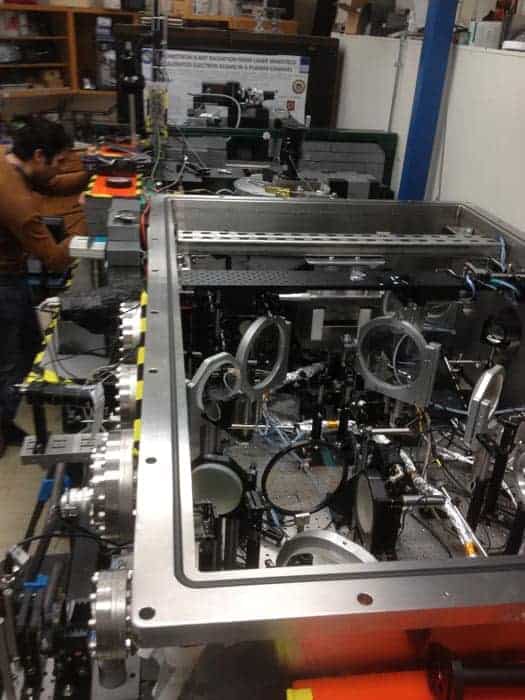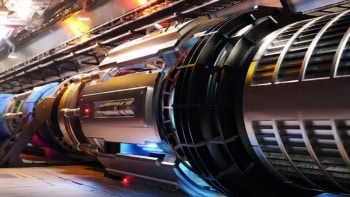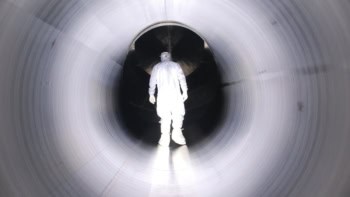
Beams of positrons with energies well above 100 MeV have been created for the first time using a laser in a tabletop experiment. The work was carried out by physicists in the UK, US and Germany who say that their set-up could be used to do small-scale studies of astrophysical jets in the lab. The positrons are more than five times as energetic as those in previous laser-driven beams.
Over the last decade or so, researchers have taken great strides in making beams of energetic charged particles by firing intense laser pulses at gases. Electron beams with energies up to 1 GeV have been created and researchers expect that the next generation of lasers could deliver electron beams at 100 GeV. But beams of positrons created with lasers have so far been limited to energies below about 20 MeV.
Now, however, Matthew Zepf, Gianluca Sarri and colleagues at Queen’s University of Belfast have teamed up with physicists at the University of Michigan, the Max Planck Institute for Particle Physics in Heidelberg and the Helmholtz Institute in Jena to use a laser to generate for the first time highly collimated beams of positrons with energies well above 100 MeV.
A HERCULES effort
Created using the HERCULES laser system at the University of Michigan, the positrons were made by first firing an intense infrared laser pulse at a gas of helium and nitrogen. The pulse, which is just 30 fs in duration, ionizes some of the gas to create a plasma. The duration of the pulse is carefully chosen so that it excites a wave that propagates through the plasma, which in turn accelerates electrons to energies of up to 1 GeV. This occurs via a well known process called plasma wakefield acceleration.
These electrons form a tight beam that travels in the same direction as the laser pulse until they slam into a thin solid target, which slows them rapidly down, emitting photons in the process. As these photons then travel through the target, they scatter from nuclei, which encourages a photon to be converted into an electron and positron through “pair production”.
The positrons (and electrons) form a tight beam that is then sent through a magnetic spectrometer that deflects electrons in one direction and positrons in another. By detecting the positrons on a position-sensitive screen, the team was able to measure their energies in the 80–250 MeV range.
Jetting in
One possible early application of the accelerator could be the study of astrophysical jets. These appear to involve highly collimated jets of electrons and positrons that interact with the interstellar plasma. According to Zepf and Sarri, tiny analogues of these jets could be created by firing their electron/positron beam through a low-density gas.
The new research could also help with construction of a high-energy electron–positron collider for particle-physics experiments. While such collisions could be achieved using conventional accelerators such as the planned International Linear Collider (ILC), such facilities would be huge – up to 50 km long in the case of the ILC. In principle, future generations of lasers would be capable of producing electrons and positrons with high enough energies to do particle-physics experiments on a tabletop.
The accelerator is described in Physical Review Letters.



